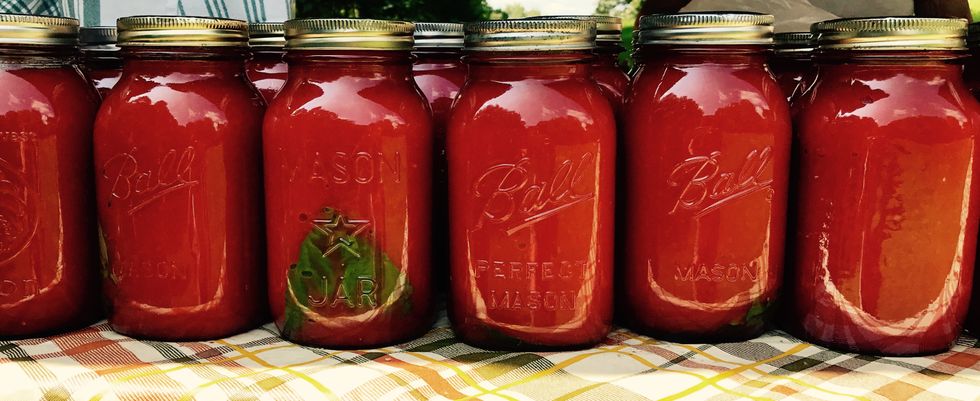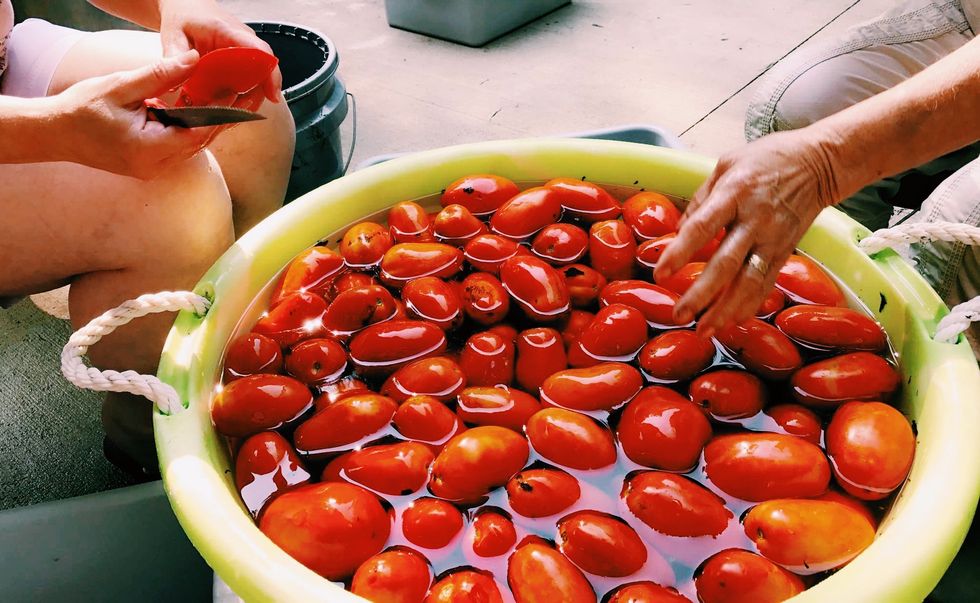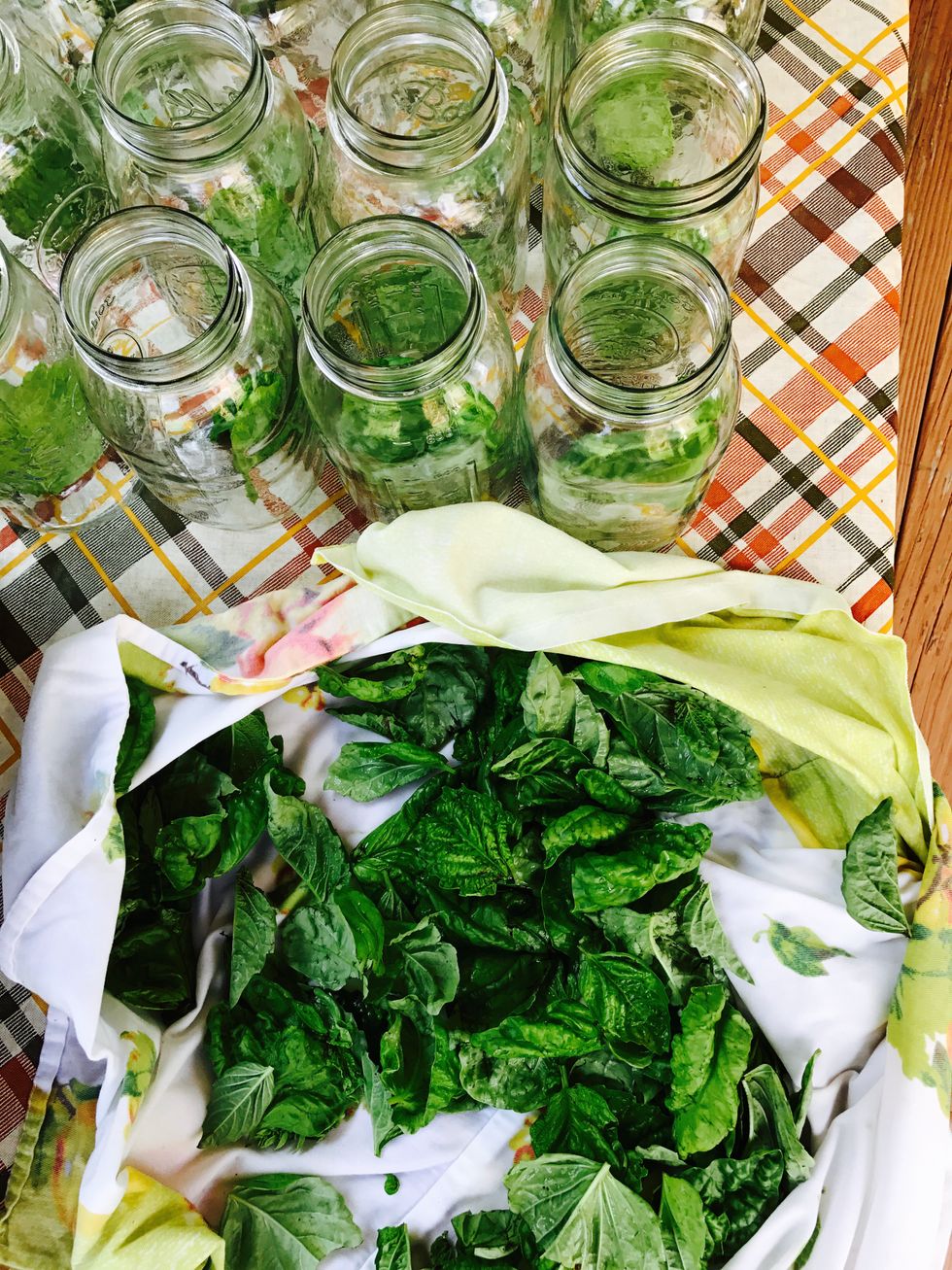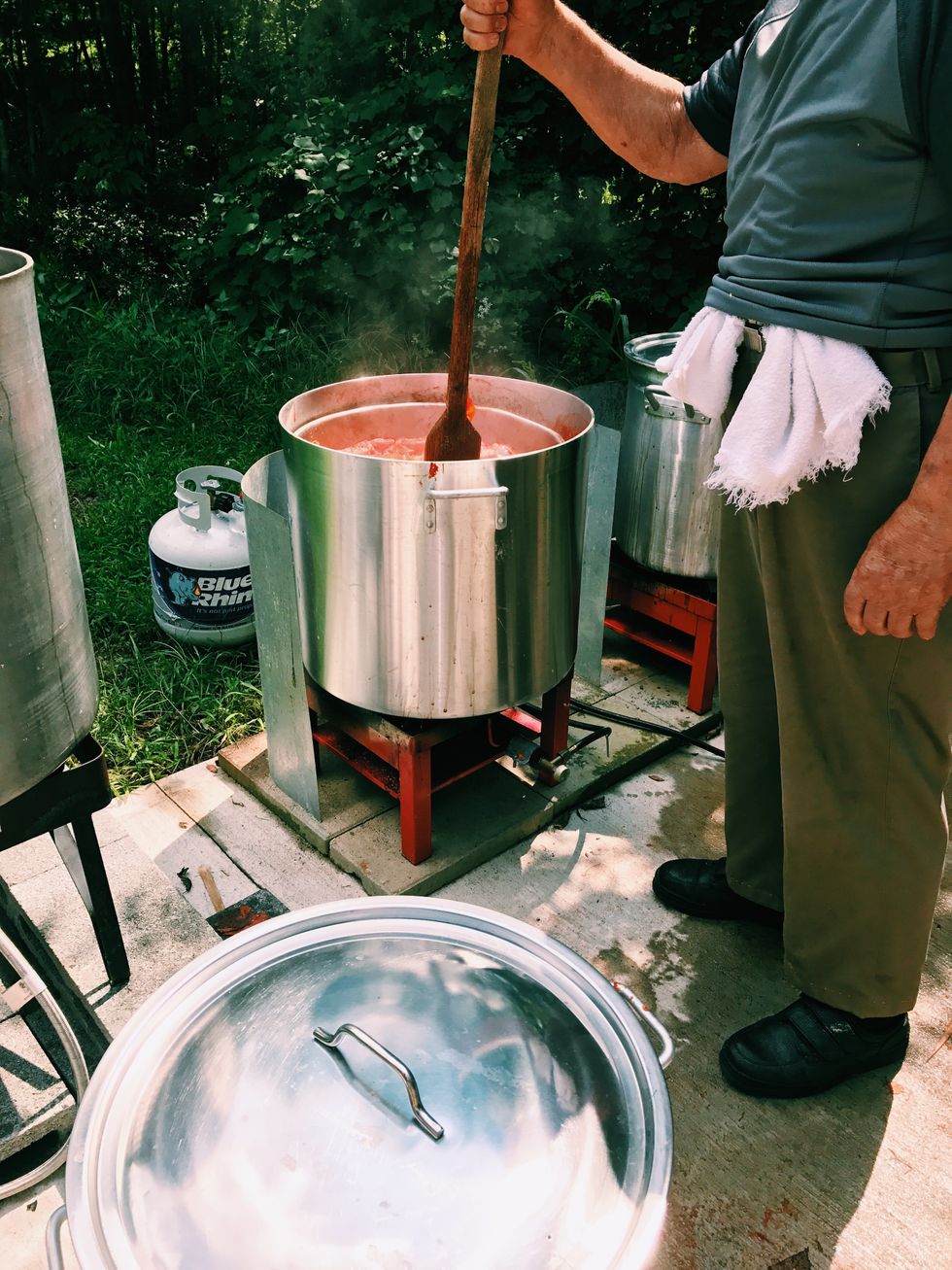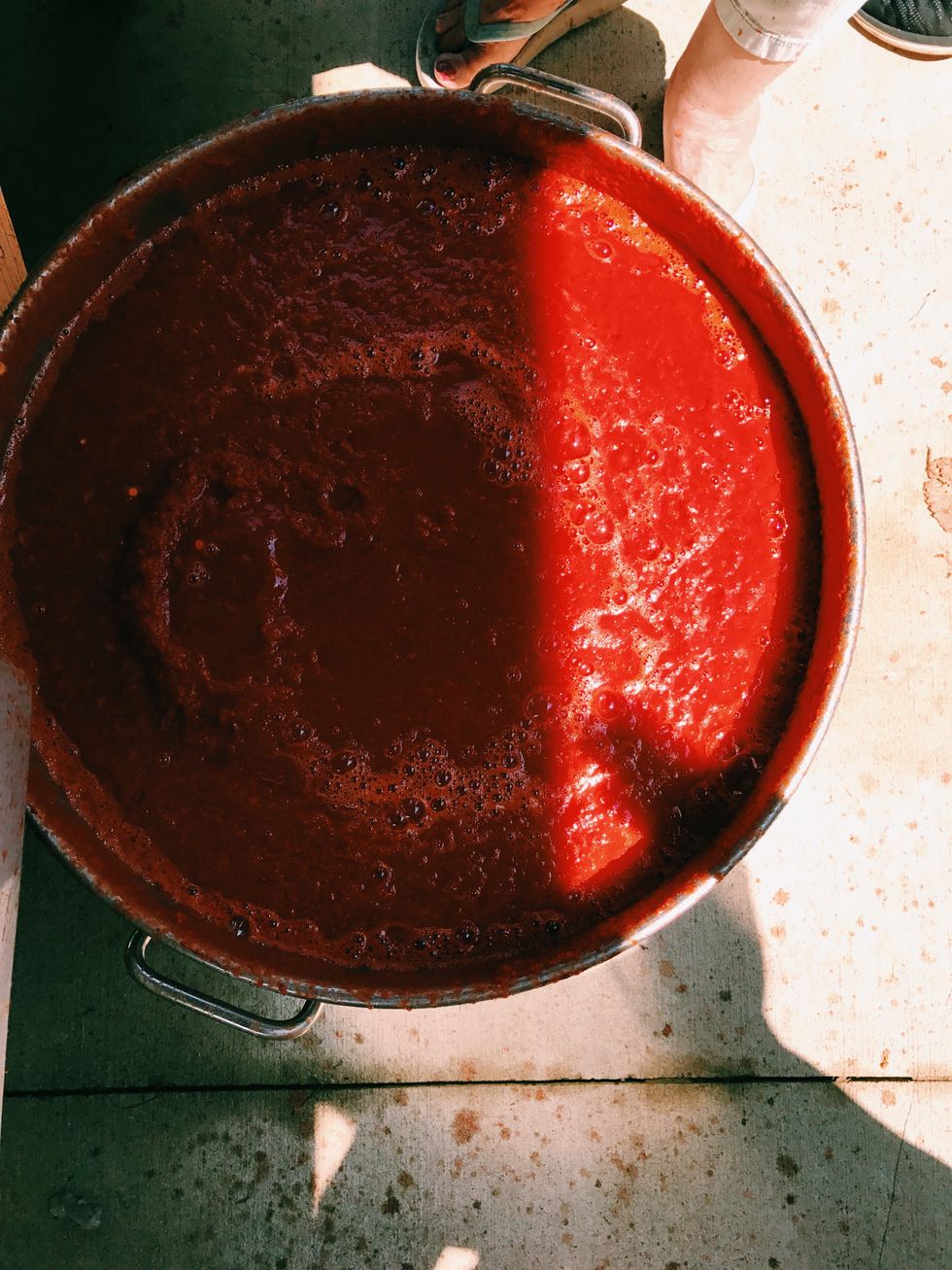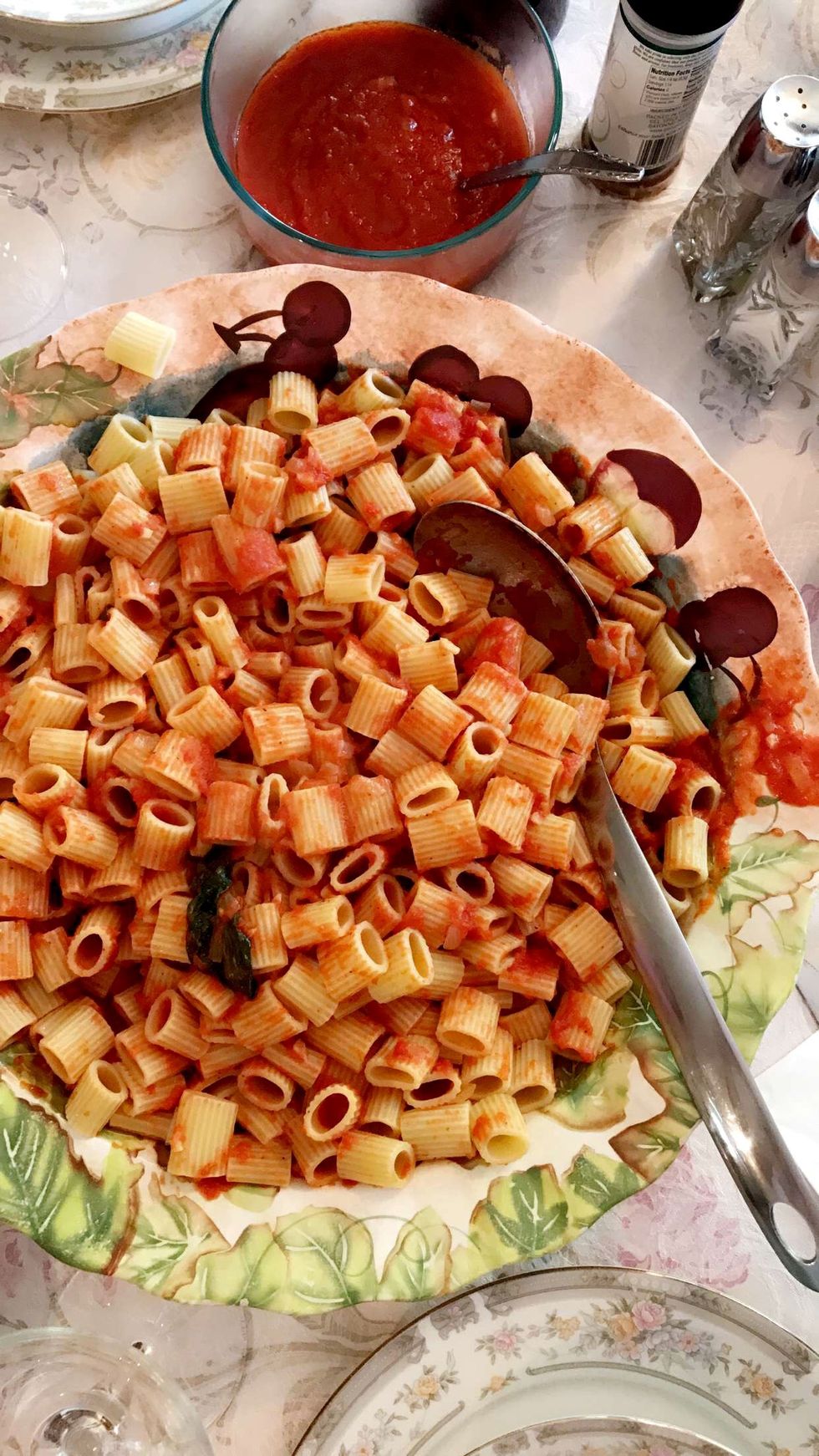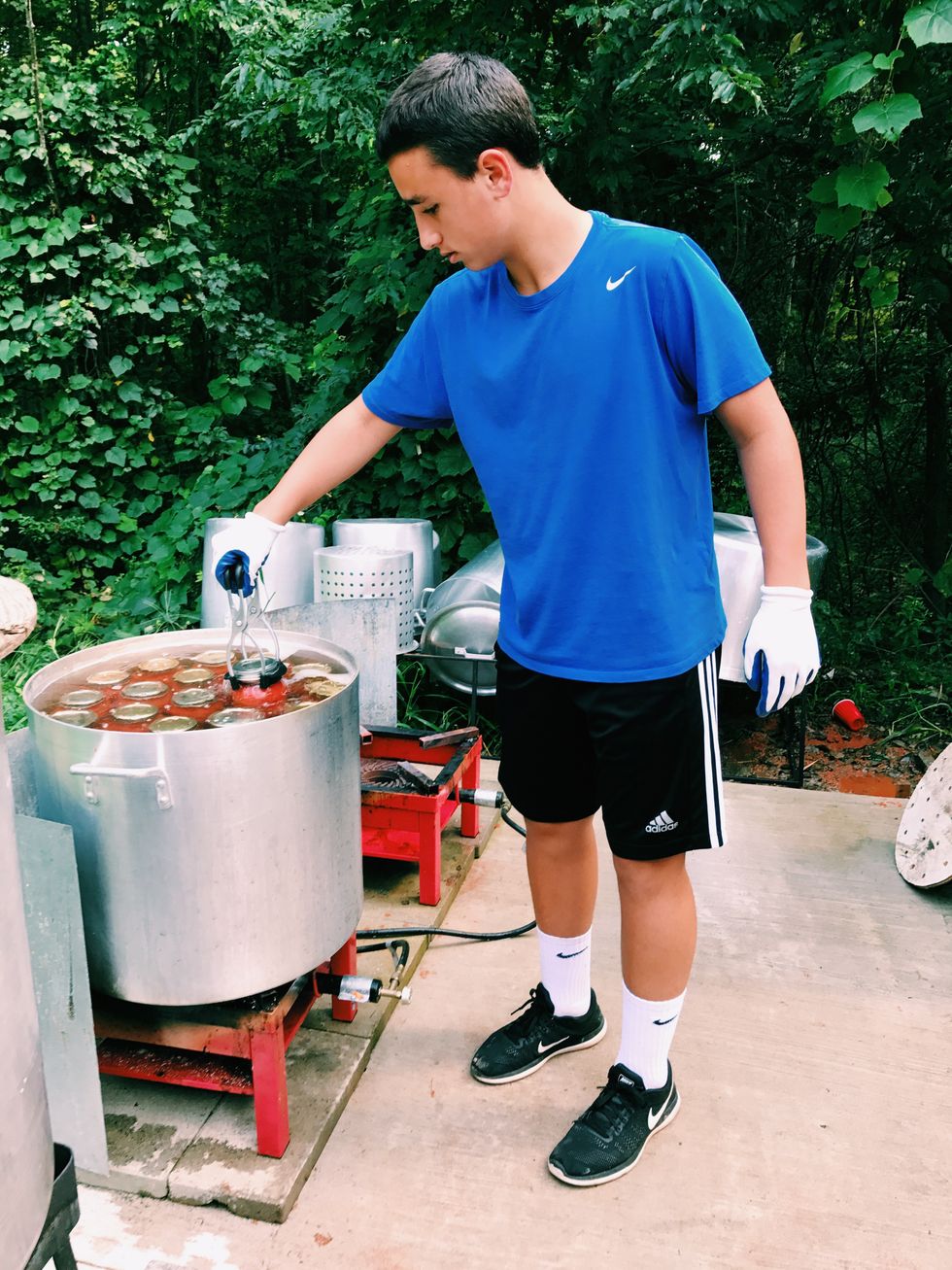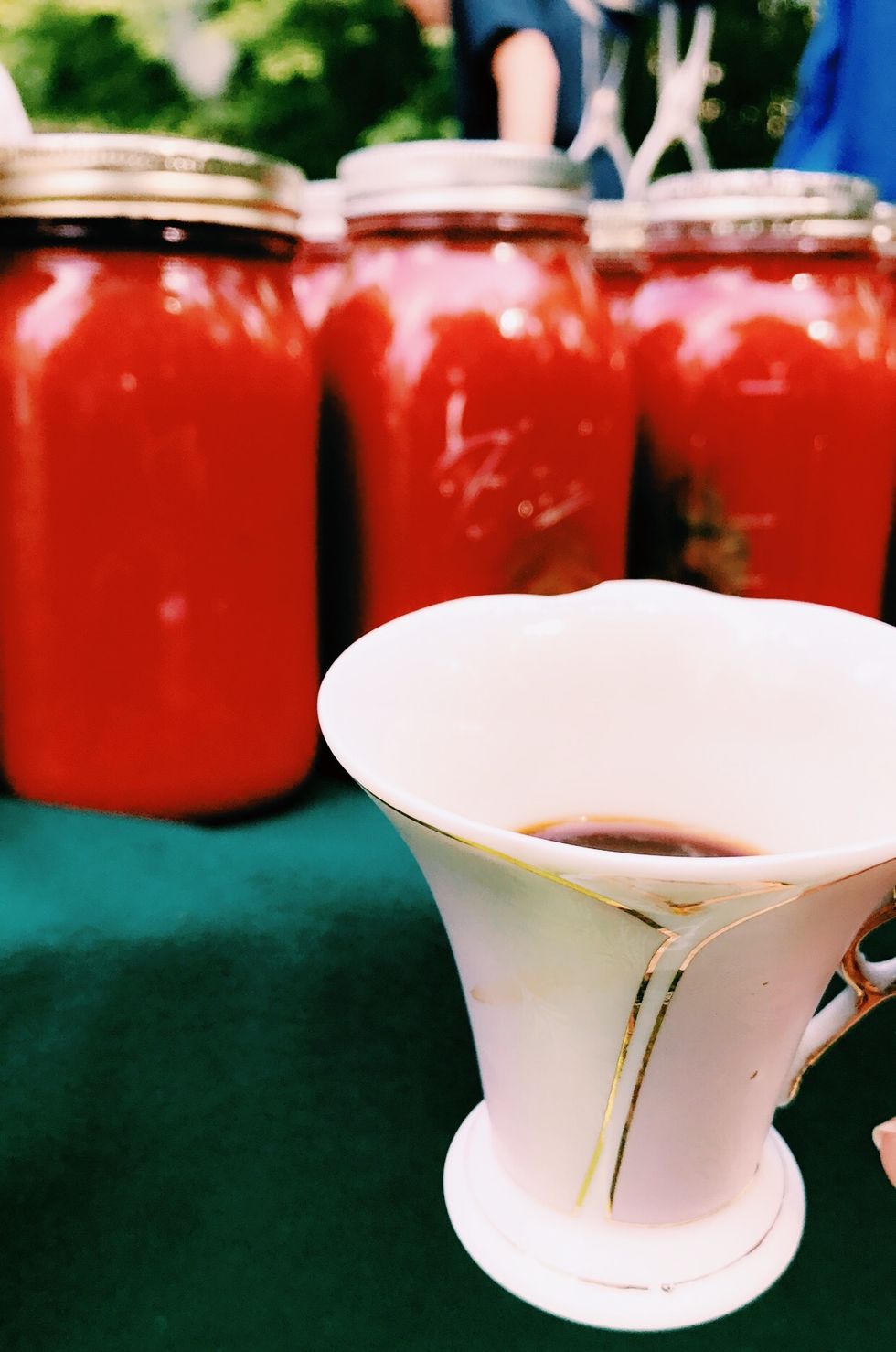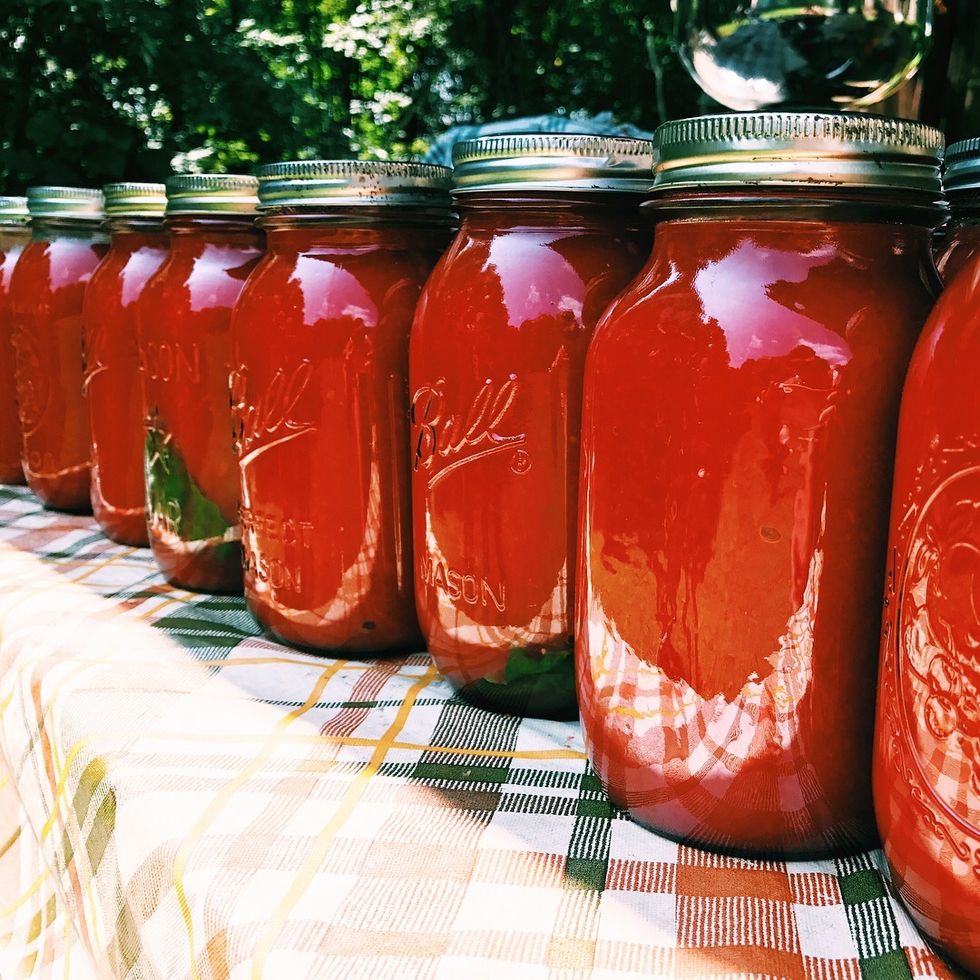The end of the summer approaches and the heat thickens to a low boil. Phone calls are dispersed among relatives and the conversation hums like a pot of simmering water on the stove. Hundreds of mason jars gleam in their gold caps and line the kitchen counter tops while heaps of fresh basil are washed in the sink and left to dry.
These are the tell-tale signs of sauce season – that time of year when my family comes together to carry on the age-old tradition of making and jarring our homemade tomato sauce.
Suspense and anticipation hang in the air as we prepare for the countless hours of work, sweat, and uncertainty that are inevitable in the continuation of a custom that is not only deeply ingrained in our culture, but wholly dependent on the abundance and purity of nature.
Homemade sauce is an exalted treasure, not only for its undeniably delicious taste, but for its symbol of discipline, unity, and pride. It instills the togetherness of family because it means the preservation of a timeless tradition.
Together, we harvest the fruit from the ground and transform it to create a sauce that is not only natural and flavorful, but that means the succession of our ancestors and our recognition of the past. It is a reminder of the tireless work that not only ensures survival, but creates one of the simplest and sweetest joys of life.
The volatility of nature confines or bolsters our ability to create our own tomato sauce. This summer, we schedule to pick up our tomatoes on Saturday morning to be prepared for a full day of cooking on Sunday.
Early Friday morning, we receive a phone call from the farm indicating that the supply of tomatoes has been sufficiently depleted by an inconvenient rain storm. You can imagine the heartbreaking dismay and disappointment that flood Nonna’s face at hearing this news.
The next 48 hours mean continuous and vigorous hoping that a batch of tomatoes will magically appear by Sunday morning.
Luckily, magic exists.
At the crack of dawn (naturally, Nonna was the first one awake), we travel to the farm to pick up our tomatoes. Two hours later, we are in the backyard under that big tent and surrounded by ten crates of tomatoes, dutifully washing, halving, and coring while three massive tin pots are put up to heat and the symphony of Italian dialect begins.
9:00 AM
Clean, cut, and sort the tomatoes.
Cut the tomatoes in half and hull out the tasteless stem. As per Nonna’s instructions, those tomatoes that are “greener” should be put aside for a Caprese salad.
Any uncharacteristically soft tomatoes must pass the “smell test." If the tomato smells rotten, pass it to Lucia, who is diligently cutting tomatoes beside me. If Lucia says it smells rotten, the tomato should be thrown out (Lucia knows best).
PSA: Hands and fingers may experience cramping after cutting and hulling ten crates of tomatoes.
11:00 AM
Fill your already cleaned mason jars with the washed basil, as mentioned above. The basil adds an authentic and unique flavor to each jar, sealing it with an unrivaled freshness that preserves the natural aroma of the tomatoes. Be generous.
11:30 AM
Uncle Mario, a cheerful, smiling, and wise Italian man, has been preparing three large metal pots for the cooking of the tomatoes. He is the head of the operation, an aficionado of tomato sauce and its historic process.
Once the tomatoes are cut, Uncle Mario tends to them with a careful, trained, and artistic hand. Uncle Mario stirs the pot with a large wooden spoon that looks like it has been passed down by all the tomato sauce aficionados that came before him.
As the tomatoes cook, a distinct aroma travels under my nose. Mom says, “It smells like Italy.”
12:00 PM
Strained and blended, the tomatoes fill a massive pot, this time almost liquidized. With a dash of salt, a thorough stir, and a thoughtful taste, we approach true sauce form.1:00 PM
Lunch – a necessary and delicious break needed to rejuvenate and refuel from the morning of work.
Sufficiently dirty and ravenously hungry, this is the first time we taste our fresh sauce in its final form. It is a shared experience over a beautifully set table and an impossibly large bowl of pasta that is equally as appetizing to the eye as it is to the stomach.
2:00 PM
One by one, we transfer the sauce from the metal pot into the mason jars.
Once the jars are closed, they are placed back into a hot metal pot to be boiled. Boiling the jars preserves the sauce and prolongs its lifetime until the next batch of pasta is cooking on the stove.
3:30 PM
The slight break in the harrowing heat of the mid-day sun and the unavoidable sluggishness that comes with the digestion of our lunch-time pasta calls for sweet biscotti dipped in a cup of espresso. It’s the perfect pick-me-up.
4:00 PM
The jars are lined up. We count. 160 jars in total. A broken record. Delirious with exhaustion, satisfaction soothes the muscles and relief cools the mind. I give Nonna a hug.
The jars are left to cool, engulfed by a soft blanket to ease them into preservation. We sit together under the big tent on the rickety wooden stools, our clothes stained with red and our hands raw with dirt.The sun begins its descent to rest and a soft breeze blows, carrying the lingering scent of tomatoes through the air. At once we recognize the aroma, as if we are breathing as one.
The Italian dialect symphony progresses to a slow decrescendo, mimicking our aching bodies and mellowing minds. Nonna smiles and I feel the unbreakable unity and the infectious fulfillment that touches each of us through this timeless tradition.
It is the nature of family. We can always come back to the table.

